Wood stoves - introduction
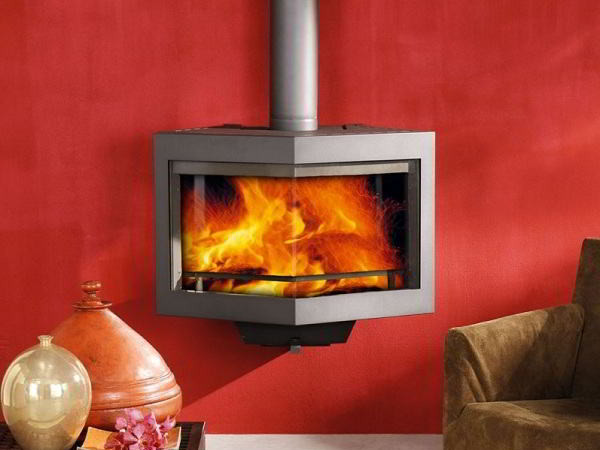
“There is no place more delightful than one’s own fireplace.” – Cicero
Contents
What are wood stoves?
They are stoves for burning wood to heat your space, your water, and even to cook on. A basic stove will be of cast iron or steel (lined with fire-brick to retain heat), usually with a door at the front for loading, lighting and ash removal – but sometimes on top in small stoves.
Open fires are pretty, but most of the heat disappears up the chimney. Stoves are typically around 3 times more efficient than fireplaces. Also, updraughts from below pass through the logs and draw off volatile gases (which provide most of the heat) and suck them up the chimney unburnt, which wastes heat and causes tar build-up in the chimney. A fireplace also sucks in a great deal of air to operate without smoking, which creates cold draughts in your house.
A stove contains the fire, allowing the wood to burn in a controlled manner. The air supply can be regulated to alter the heat output of the stove. The metal casing of a stove heats up and radiates heat out into the room. You can have a simple stove for heating, or one with a back boiler to provide hot water or heat radiators in other parts of the house.

Types of stove
Traditional: typically have a square shape and one or two doors on the front, sometimes with glass in them. They can come with large back boilers.
Contemporary: come in many shapes and sizes. They’re usually very efficient, but have relatively small fireboxes and therefore relatively low heat outputs. However in a well-insulated house this should be all you need.
Ceramic stoves or kakkelovns: (popular in Scandinavia and Eastern Europe) have a ceramic casing that acts as a heat store to radiate heat into the room for hours after the fire is out.
Range or cooker stoves: Aga / Rayburn-type cookers are really designed for running on coal or oil. If you want a true wood-burning cooker stove then look for a European type, e.g. a Wamsler or an Esse wood cooker – efficient cooker stoves designed for wood burning with big back boilers. These can heat your whole house, provide hot water and you can be cook on and bake in them.
Pellet stoves: burn pellets made of compressed organic material such as sawdust or agricultural plant waste, and can be automatically fed from a hopper. Larger automatic-feed wood or pellet boilers can be installed in schools, hospitals etc. Burning small pieces of fuel in a relatively small fire compartment makes pellet stoves very efficient. Remember that pellet stoves have moving and electronic parts – you’ll need a trained person to service the stove, plus available spare parts. The pellets must be delivered at the right moisture content and you need a dry pellet store.
Workshop stoves: affordable steel stoves that can burn workshop scraps and sawdust, turning them into heat. Something to consider to get you through the long winter months in a cold workshop.
Rocket stoves: simple, high-temperature, often portable stoves.

What are the benefits of wood stoves?
This is a controversial topic. Burning wood for heat has come in for a lot of criticism, in three main areas – removal of forest, carbon emissions, and pollution, especially in urban areas. Lets look at these three points in turn.
Forests
Forest cover is increasing in colder regions. Even though rainforests are still declining, China has undertaken a huge tree planting programme, trees are returning in their billions to abandoned farmland in Russia, and woodland is increasing in the UK. So the firewood resource is increasing globally, not declining (and to be clear, we’re definitely not advocating the burning of tropical wood).
However, if a large percentage of the population in temperate / cold areas decided to switch to wood fuel, the resource would soon be depleted. We advocate the use of wood fuel locally (which minimises the amount of fuel required to transport it), and so that rules out large urban areas, where most people live. So we’re not saying that wood heat is for everyone, by a long stretch. Ideally, it’s for people living in rural locations, with an easily-available, local source of firewood.

Carbon emissions
Wood is a carbon-neutral fuel, i.e. burning releases CO2 (the same amount as if the trees died and rotted) but new trees absorb it. As long as we plant new trees and maintain forest cover (which is happening – see above), then it’s not possible for wood burning to increase the amount of carbon in the atmosphere. Remember that whether we burn wood or not, the carbon in trees will end up back in the atmosphere anyway, as the trees fall to the ground and rot. This is not the case for fossil fuels, which should be left in the ground.
Pollution
Emissions from wood burning are lower than coal, oil or gas as regards NOx and SOx (acid rain) and carbon monoxide, but worse for particulates. For space heating, emissions and energy losses from power stations make conventional electricity the worst option environmentally; and wind and photovoltaics are as yet too expensive for heating.
The EROEI (energy return on energy invested) is better for wood fuel than for natural gas or oil. In other words, fewer units of energy have to be expended to obtain one unit of energy from wood fuel than for fossil fuels (except coal, but no-one is suggesting that we burn more coal, are they?), and therefore there will be less pollution involved in getting wood fuel to the point of use than fossil fuels.
Modern ‘clean burn’ wood stoves can legally be used in smokeless zones; they use secondary combustion, baffles or catalyts to maximise combustion of gases and particulates, reducing emissions and increasing efficiency. However, even clean stoves emit particulates, which can cause health problems, especially for lungs and heart, and so stoves will add to the pollution from industry and transport that already exists in big cities. When transport distances for firewood are considered, it can be seen that stoves are not really suited to urban areas.
How to install a wood stove and flue.
Other benefits
In rural areas, it’s difficult to know what is better for heating than wood, in terms of pollution, carbon emissions and price. Logs are the cheapest way of heating your space (around 1/5 the price of electricity per kWh) – especially if you harvest the wood from your own land, or from nearby woodland for free. It will probably get relatively cheaper too, as fossil fuel prices rise, and carbon-neutral fuels get tax breaks.
Firewood is a renewable resource, that needs no factories, fossil fuels or synthetic materials to produce – only land, sunshine and rain. We advocate the wise and sustainable use of the resource, so that woodland will be preserved and hopefully expanded, as a source of wood fuel as well as timber; and selective rather than clear felling, so that wildlife habitat is enhanced and expanded.
Wood frees householders from centralised control when it comes to heating. If they have a local source of firewood, they won’t be cold, or reliant on multinational corporations. Heating with wood is a rough-and-ready, practical, hands-on business, which will provide security if other sources of heating fail. It doesn’t require electricity, computers, plastics, remote controls or touch screens. The market for wood fuel is good for local communities, and its use promotes self-reliance.
NB: to reduce the need for wood fuel, we advocate the construction of homes in ways that reduce heating requirements.

What can I do?
First, learn as much as you can. Here’s a free pdf of our book, Heating with Wood: Wood Fuel, Stoves and Home Heating, by Andy Reynolds of theInfoWorks.
Basic wood stoves start at around £400, (c. £1000 for clean burn) new, or cheaper second-hand. Your supplier should be able to recommend an installer, or you can install yourself. Make a register plate for the chimney (can be a thin sheet of stainless) with a hole for the flue pipe, seal flue and plate with fire cement, put fire string round door (both from plumbers’ merchants or online).
Stoves need air and if the output of your stove is above 5kW then you need to provide permanent extra ventilation.
Build your own stove
If you have access to sheet steel and cutting and welding equipment, you could even build your own, which would work out cheaper still, but don’t underestimate the work needed to build an efficient stove. It’s hard to roll and seam weld flue pipe so unless you have the equipment you are better off buying it.
Examine existing stoves to get ideas. Remember to add a baffle plate to increase the distance covered by the flue gases which in turn increases the stove’s efficiency. Make sure that you put firebricks in the firebox or the heat of the fire can eventually warp the metal. Remember that tar will be pouring down the inside of the chimney and that this must end up in the stove so all connections must be tar tight – ie female connections pointing upwards. The flue spigot lets you join the flue pipe to the stove and this connection (and other connections between single-skin flue pipe lengths) should be sealed with fire cement.

Hearth
Stand the stove on a slate, concrete or other non-combustible slab extending at least 150mm at the sides and 300mm at the front. This slab must be 250mm thick or 150mm with a 50mm air gap underneath unless your stove has been officially tested and shown to not heat the hearth to more than 100 degrees. If this is the case then the hearth can be 12mm thick. There is a minimum hearth size of 840mm x 840mm.
Distance from combustibles: follow the manufacturers recommendations. If there are none then a good rule of thumb is 400mm at the back and sides and 450mm at the top. You can effectively heat shield combustible materials using 12mm fireboard and a 12mm air gap.
Distance from non-combustibles: the heat from the stove needs to be able to dissipate so you do need a gap around it. Follow manufacturers recommendations. If there are none a good rule of thumb is 150mm at the sides, 50mm at the back, 300mm above.

Flue / chimney
Old chimneys will need re-lining, as tar could be deposited, causing a fire hazard, plus gases could seep through into living areas. Chimneys must be swept every year to remove creosote and tar and avoid chimney fires.
The first section can be single skin flue pipe which is best made of stainless steel because flue deposits are corrosive. Running over 1500mm in single-skin flue pipe is not recommended because of the high levels of tar condensate that would result. The external surface of single skin flue pipe must be three times it’s diameter from combustible materials. Running single skin flue externally is not a great idea as the flue gases will get very cold.
Lining and insulating your chimney is firstly to reduce the risk of chimney fire. The colder flue gases get the more tar they deposit and it is this tar that causes chimney fires.

Before you install a stove onto a chimney you need to visually inspect the chimney. If you have doubts then you should smoke test the chimney and remedy any faults found. If smoke leaks into other rooms then lining the chimney will cure this problem.
Twin wall flue: Where there is no existing chimney you can still install a stove using twin wall insulated flue pipe. This makes floor and roof penetrations easy and safe, but the main point is that like a lined and insulated chimney it also keeps the flue gases hot and therefore reduces the risk of chimney fires. Many people want to run single skin flue all the way up through their house and out. There will be a lot of tar deposited in such a flue (especially externally) which means the risk of chimney fire is high. It will also be very difficult to safely run this flue through wooden parts of houses.
Going straight up and through the roof is nearly always cheaper and easier than going out through a wall and then up. Check current building regulations for the height of the flue / distance from roof.
Firewood
5 tonnes of wood per year is more than enough for a basic stove in your main living area – but that’s assuming it’s in use most of the time from October to April; unseasoned wood is heavier because of the water content.
You can buy logs split, or cords (lengths over 1m) and cut and split them yourself, in which case you’ll need a chainsaw or a crosscut saw, and a splitting axe from a farm / garden equipment supplier (ask about protective clothing and health & safety). Trees are best felled in the winter when moisture content is lower, then cut and split to dry better. Store under cover for at least one summer, which should reduce moisture content to around 25%. Ash is probably the best firewood, as it has the lowest moisture content when green (c. 35%), but beech, cherry and hawthorn are also good. Don’t use second-hand construction timber, unless you’re absolutely sure it’s untreated, as it will release toxic fumes; and certainly not chipboard, plywood or mdf – even for kindling – as it contains formaldehyde. Bring some split logs in and stack them next to the stove (not touching) – this will dry them more.

Lighting the stove
Leave a layer of ash, add paper, dry kindling (you don’t need firelighters) followed by a few small, dry logs. There will be an air inlet to adjust air flow – have this open at first, and slowly shut it down as the fire becomes more established. Many stoves have a primary and secondary air supply. Often, the primary air vent is near the base of the stove with the secondary vent nearer the top. To light the stove, open the primary air supply up. When it is lit then close the primary air down and use the secondary air to control the fire. Because the secondary air supply comes in from above this makes for more efficient combustion of the wood.
Wood ash contains potash, and can be used as a fertilizer (best applied at the end of the growing season, and not on alkaline soil).
NB: stoves should definitely never be used just for aesthetics – e.g. a wood stove burning, but also with radiators running from a gas-fired boiler.
See here for more detailed information on getting and using a wood stove.
Specialist(s)
Thanks to Sune Nightingale of Stoves Online for information.
The specialist(s) below will respond to queries on this topic. Please comment in the box at the bottom of the page.

Andy Reynolds is a carpenter / joiner and woodsman who has tutored courses and authored books with us. He has lived on a smallholding in Lincolnshire since the early 80s, renovated a house, built a holiday cottage and got off-grid. He records his adventures with educational videos on his YouTube channel.

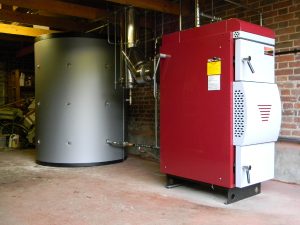
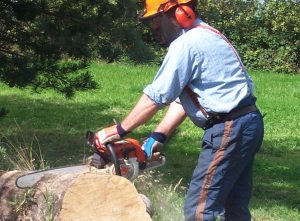
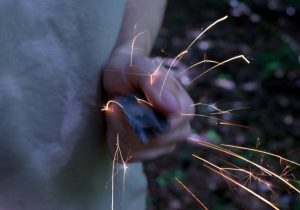
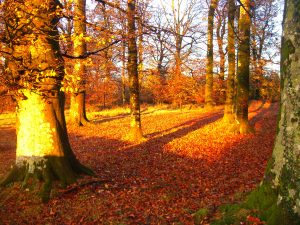
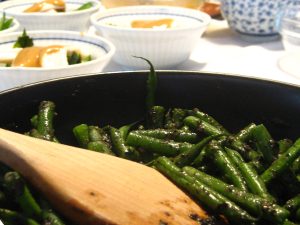
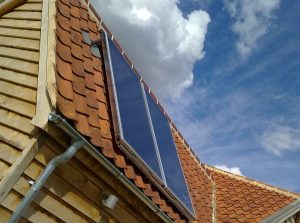
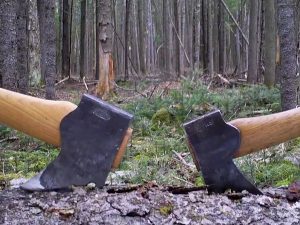
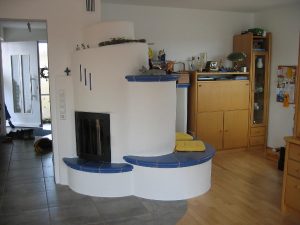
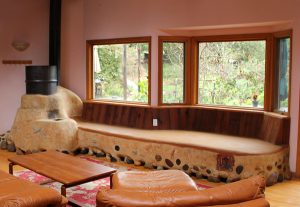
4 Comments
Useful article but there’s a small slip that seems to have got through your editing: the usual efficiency given for an open fire is around 20-25%; the normal efficiency of a modern stove is about 75-80%. So, stoves are not 75 percent more efficient, but either 300 percent more efficient (than the open fire) or 50 percentage points more efficient. Maybe you could just say stoves have three times the efficiency? After all, it’s a measure of the wood one needs to burn to get to get a room heated.
Stuart – good call, thank you. Changed it.
What do you think of “heat logs” in terms of clean burning, and energy efficiency.
Fantastic article! This was incredibly helpful in understanding the different types of wood stoves and the best practices for installation and maintenance. I especially appreciated the section on choosing the right wood—it’s a small detail that makes a big difference in efficiency and safety. The guidance here really clarifies things for anyone considering a wood stove, whether they’re just starting or looking to improve their setup.
Thank you for sharing such detailed insights!